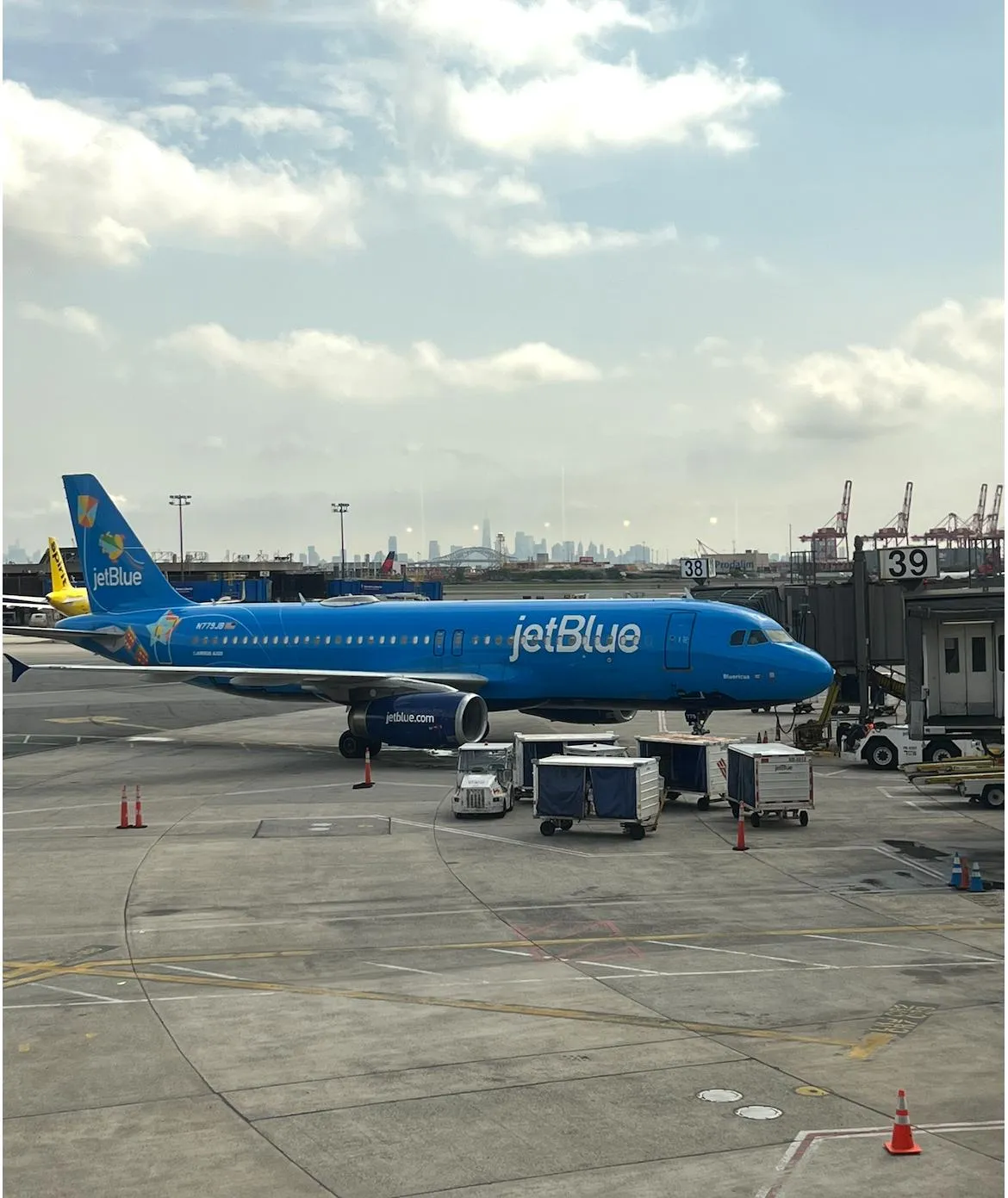
Why JetBlue Needed the United Partnership: A Deep Dive into JetBlue's Financial Crossroads
JetBlue has long been known as a traveler-friendly airline, offering perks like free Wi-Fi, live TV, and a highly acclaimed Mint business class. But beneath the surface, the carrier has been navigating financial turbulence—and in 2025, it hit a breaking point. With shrinking margins, canceled routes, and grounded planes, JetBlue is now betting big on a new alliance: its "Blue Sky" partnership with United Airlines.
This blog post unpacks why JetBlue needed this deal, what it says about the airline's financial health, and where it could go from here.
The Current Financial Reality: JetBlue in 2025
JetBlue CEO Joanna Geraghty recently shared an internal memo that painted a sobering picture:
Soft Demand: Domestic leisure travel—the airline's core revenue stream—has slowed since January 2025.
Route Retrenchment: JetBlue has exited 15 cities and cut more than 50 routes since 2024, including key markets like Baltimore (BWI), Charlotte (CLT), and Bogotá (BOG).
Grounding Aircraft: The airline plans to park four older Airbus A320s and has paused retrofits to conserve cash.
Frozen Growth: Originally projecting flat capacity in 2025, JetBlue is now re-evaluating that goal.
"Even a recovery won't fully offset the ground we've lost this year." – Joanna Geraghty, JetBlue CEO
This isn’t just belt-tightening. It’s a clear sign that JetBlue’s balance sheet is under stress, and its path to profitability is uncertain.

What Went Wrong: A Strategic Misalignment
JetBlue’s business model has always straddled the line between low-cost carrier and full-service airline. This middle-ground strategy is costly—and fragile.
1. Failed Spirit Merger
JetBlue poured enormous resources into acquiring Spirit Airlines, hoping to scale rapidly. When the DOJ blocked the deal, JetBlue was left with legal bills and lost momentum.
2. High Cost Structure
JetBlue offers high-end onboard service, but without the route density or ancillary revenue of legacy airlines like Delta or United. That limits its ability to drive profits.
3. Domestic Overexposure
Too much reliance on domestic leisure travelers—especially East Coast-based—left JetBlue vulnerable when economic uncertainty hit in early 2025.
Enter United: Why Blue Sky Is a Lifeline
In May 2025, JetBlue and United launched the Blue Sky partnership, a rare interline agreement that:
Allows passengers to book both airlines on one ticket
Enables baggage transfers between carriers
Introduces limited elite status reciprocity
Opens the door to future loyalty integration
While not a codeshare or merger, it’s a significant move—and a strategic lifeline.
What JetBlue Gains:
Global Reach: United opens the door to international routes and Star Alliance destinations.
Loyalty Perks: TrueBlue members now have more meaningful redemption options.
Prestige Boost: Partnering with United elevates JetBlue’s brand among business travelers.
JFK Slot Optimization: JetBlue shares JFK access with United, gaining flexibility and leverage.
This isn’t a marriage—it’s a strategic alliance born out of necessity.
The Road Ahead: Three Possible Futures
✅ 1. Recovery via Premium Strategy + Partnerships
If JetBlue can successfully realign around profitable routes, boost premium offerings (like Mint and the upcoming domestic first class), and extract value from Blue Sky, it may stabilize.
⚠️ 2. Further Cuts or Strategic Asset Sales
Should demand continue to lag, JetBlue could be forced to sell key assets—Mint, loyalty data, or JFK slots—to stay afloat.
🚨 3. Merger or Bailout in 2026
If Blue Sky underperforms, JetBlue might pursue a more permanent partnership—or full acquisition—by United, Alaska, or Delta.
What This Means for Travelers
For frequent flyers and points collectors, this is a critical moment:
Elite Status Match Opportunities: Mosaic members could gain United Premier status—useful for upgrades, bags, and priority access.
Redemption Potential: Look for sweet spots like JetBlue Mint to the Caribbean (40K–60K) or United to Tokyo and Cape Town (80K).
Program Synergy: We expect tighter loyalty program integration in 2026, possibly making JetBlue points transferable or usable across Star Alliance.
Final Thoughts: JetBlue’s Make-or-Break Moment
JetBlue’s signature experience—comfortable seats, free Wi-Fi, and Mint class—is beloved by many. But great service alone won’t pay the bills. The Blue Sky partnership could be its best shot at staying competitive and independent.
This is more than just a handshake. It’s JetBlue’s bid for survival—and a sign that in today’s airline world, scale and alliances matter more than ever.
Want to stay ahead of the game? Join our Hotel Secrets Masterclass or Airline Points Academy to learn the strategies that give real travelers real leverage.
